For everyday use in town, on long-distance bike trips or even for mountain biking or road biking, the racks is a useful tool. It can hold and secure loads of varying weight that would otherwise be uncomfortable to carry in a backpack. It can also be transformed into a support for a child seat!
Characteristics of luggage racks
- Types of luggage racks : front (attachment to fork) and/or rear (attachment to frame, seatpost or seatstays)
- Shapes: simple platform, platform with retaining flap, with mounting rails, with pannier holder
- Materials: wood, aluminum, steel and titanium
ALL ABOUT LUGGAGE RACKS
Luggage rack types
For the front
Placed at the front, the luggage rack can be fastened around the wheel axle, using eyelets (threaded holes) if the fork has them, or directly around the fork arms, using special clamps.
For the rear
Any eyelets present on the frame can be used to attach the luggage rack. Some models also take advantage of the rear wheel axle to anchor themselves securely.
When the shape of the frame makes it difficult or impossible to install a conventional luggage rack, you can use a model designed to fit around the seatpost, or even on the seatstays using adjustable clamps.
Luggage rack shapes
Simple platform
This streamlined model gives you the freedom to secure your belongings as you see fit, usually with elastic straps.
Platform with spring-loaded retaining flap
Here, an integrated flap makes it easy to secure your load. Straps can always be used in addition!
Platform with pannier holder
These luggage racks can be recognized by their structure, designed to keep panniers upright and prevent them from rubbing against the wheel.
Materials
Wood
Aesthetic and original, wood is not very well suited to luggage racks, due to its low resistance in this application.
Titanium
Combining great lightness with extreme strength, this material is reserved for the most demanding users, due to its very high price.
Aluminum
Unaffected by rust, aluminum proves durable and resistant when used in luggage racks, in the form of solid tubes. It generally supports loads of up to 20/25 kg.
Steel
For the same strength as aluminum, steel is thinner. For luggage racks, manufacturers can use it in the form of hollow tubes. Steel then regains the weight advantage! Well-suited to carrying heavy loads (up to 40 kg) and easily repairable, steel nevertheless requires careful maintenance to prevent rust.
Which luggage rack to choose?
While it is now almost always possible to find a luggage rack that is compatible with your bike, a few precautions should be taken to make the right choice. Rack dimensions are not standard. Manufacturers specify compatible wheel and tire sizes.
Visit MOUNTAIN BIKES, there are very few eyelets for mounting on the frame or fork. The best solution is to choose a simple, sturdy luggage rack designed to be attached to the frame or fork. seatpost or seat stays.
If you're a city biker, you'll probably already have all the mounting threads. Or better still, the bike should come with a luggage rack!
On the road, a lightweight rack will limit the weight of the bike.
When it comes to loading, it's always a good idea to distribute the weight you're carrying as evenly as possible. If possible, opt for a front and rear luggage rack. You'll feel less unbalanced, and the feeling you normally get from your bike will be less affected.
In all cases, limiting the load as much as possible will ensure that your bike retains all its manoeuvrability. Loss of grip on uphill gradients, steering on downhill gradients, exaggerated rolling movements in bends - these are just some of the sensations you may encounter with a center of gravity that's too high. To avoid this, we recommend a maximum load of 15 to 20 kg, even if the luggage rack and your bike can support much more!
Of course, if you're planning a long bike trip, you may need to carry a heavier load. In this case, choose reinforced, rigid racks, and don't load more than 25-30kg on the rear wheel. If you opt for rail-mounted racks capable of accommodating panniers the center of gravity will be kept as close to the ground as possible, and the load will be less unbalanced.
Finally, don't forget to check how easy the rack is to install. For light or occasional use, tool-free installation models may be a good idea. What's more, they don't require threaded holes in the frame or fork.
If you're planning to install a child seat, check the dimensions provided by the manufacturer to ensure compatibility with your bike and the carrier.
Découvrez tous nos conseils & Tutoriels
ACCESSORIES - Luggage Racks
-
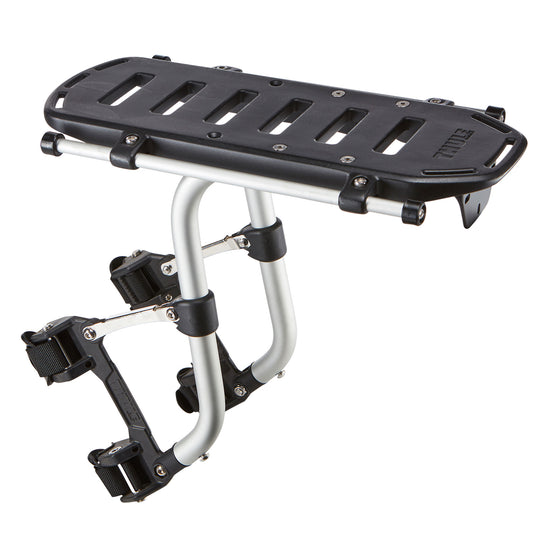
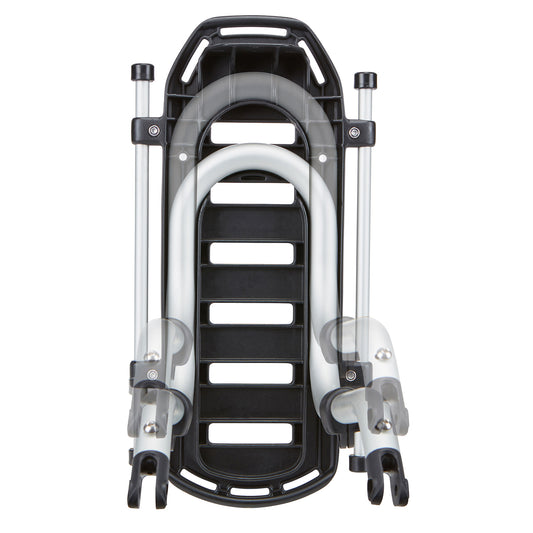
Luggage rack THULE PACK'N PEDAL TOUR RACK
Regular price 79,99 €Regular priceUnit price per -
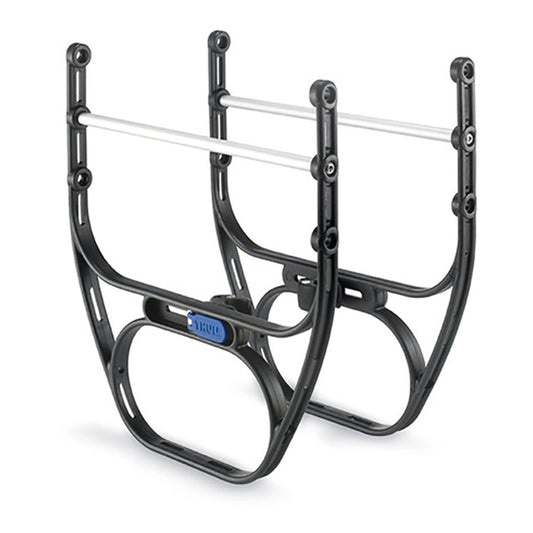
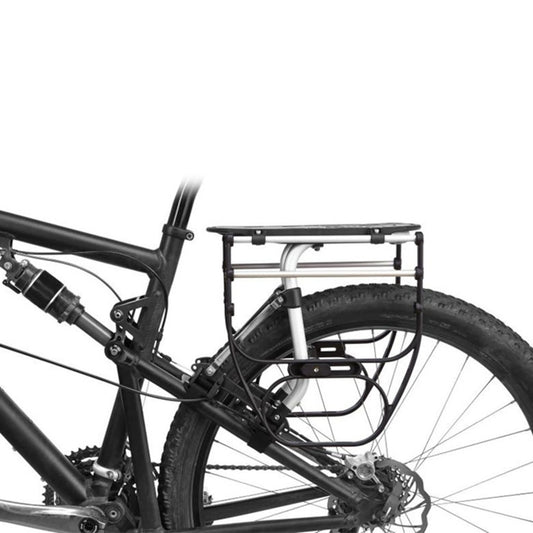
THULE bag holder for PACK'N PEDAL TOUR RACK
Regular price 29,99 €Regular priceUnit price per -
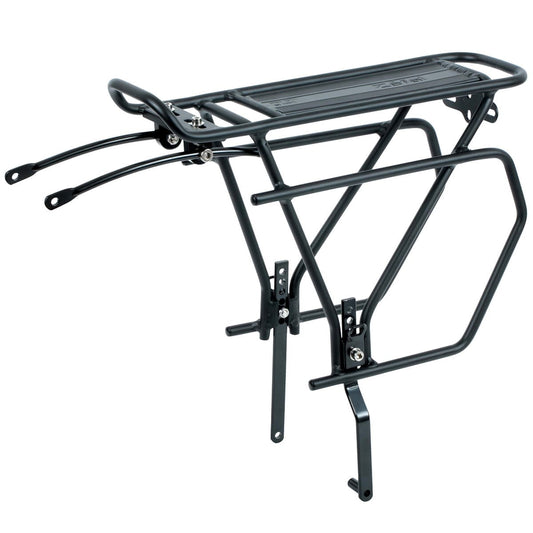
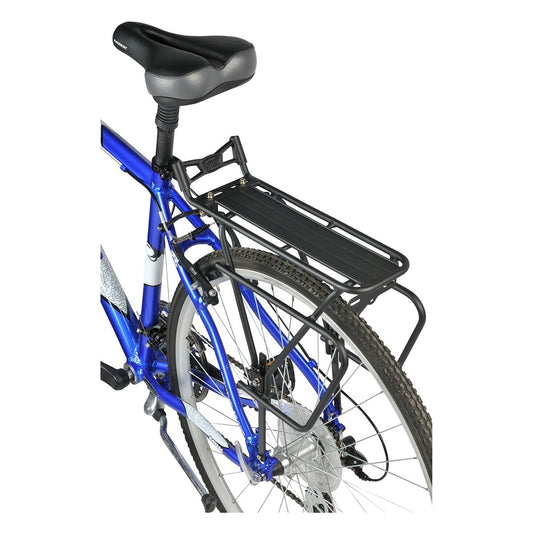
ZEFAL RAIDER R70 luggage rack
Regular price 69,99 €Regular priceUnit price per -
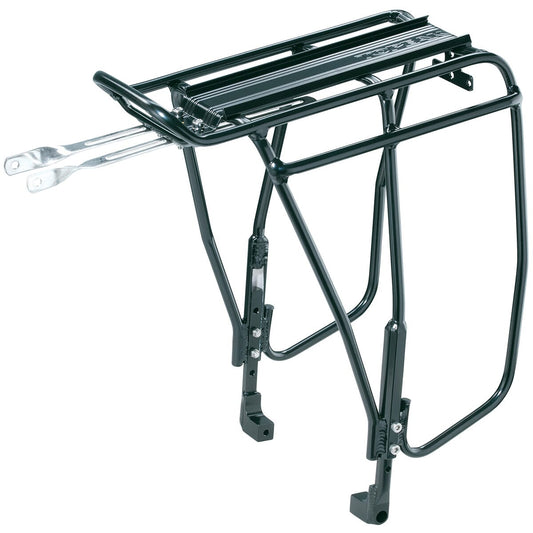
Luggage rack TOPEAK UNI SUPER TOURIST DX DISC
Regular price 62,99 €Regular priceUnit price per -
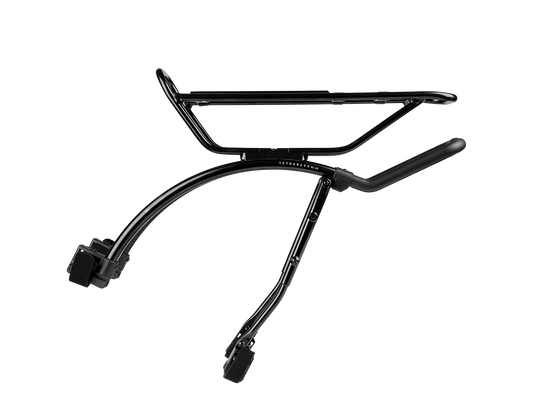
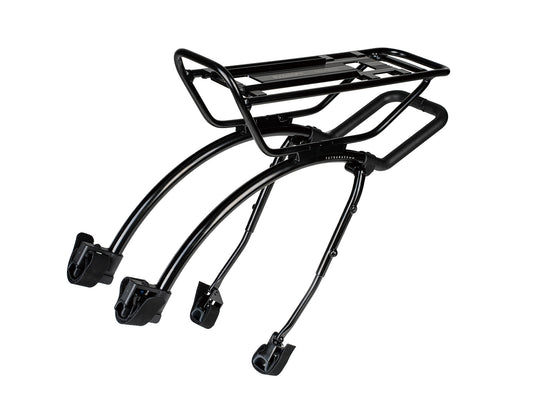
Luggage rack MTB TOPEAK TETRARACK M2 HD Black
Regular price 114,90 €Regular priceUnit price per -
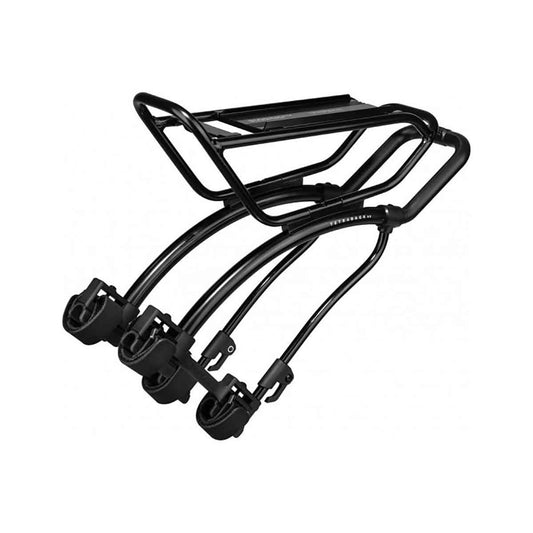
Luggage rack Road TOPEAK TETRARACK R2-REAR Black
Regular price 89,99 €Regular priceUnit price per -
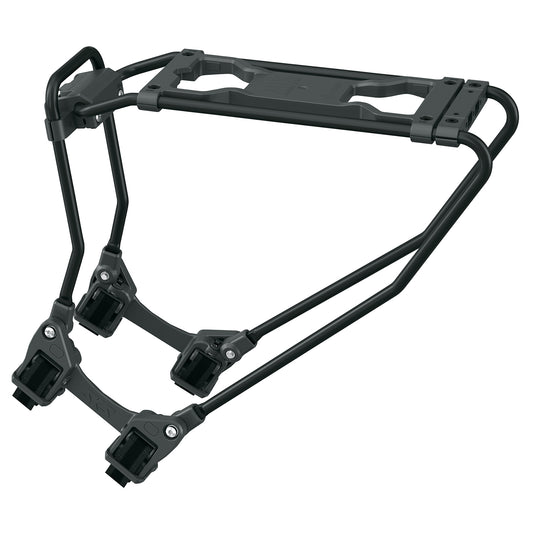
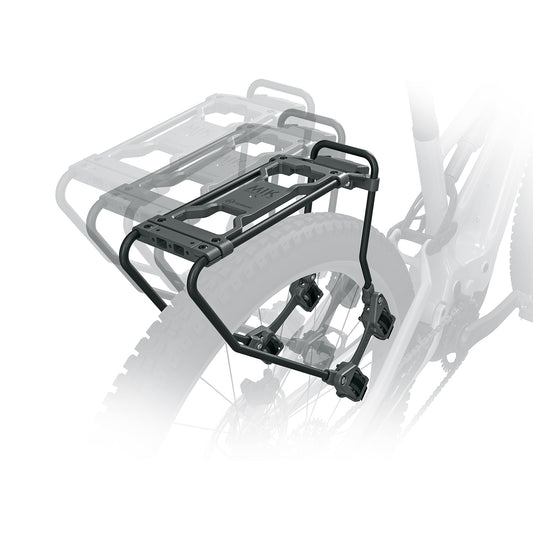
Universal luggage rack SKS GERMANY INFINITY MIK
Regular price 98,99 €Regular priceUnit price per











